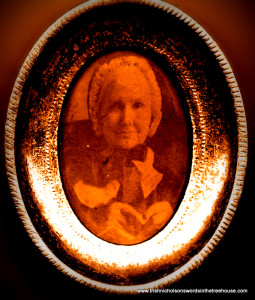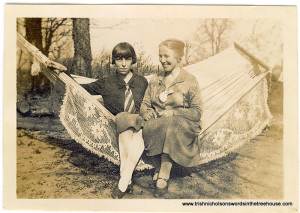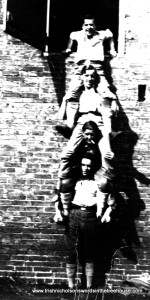 Members of our local Family History Society amassed so many notes, letters, photos and family myths they didn’t know what to do with it all. They wanted to share their histories to anchor the younger generation, but their accounts would have to compete with modern distractions: how could they write a book of family history that would be ‘a good read’?
Members of our local Family History Society amassed so many notes, letters, photos and family myths they didn’t know what to do with it all. They wanted to share their histories to anchor the younger generation, but their accounts would have to compete with modern distractions: how could they write a book of family history that would be ‘a good read’?
I ran a practical workshop for them, which they found extremely helpful, so I’m sharing the gist of it here with you. We discussed theme, voice and structure, but it all begins with the Timeline. If you are a bit hazy as to what that is, it is explained here.
Drawing out a theme:
All stories need a theme – it is the seasoning that permeates your saga, binding it all together, making it distinctive and memorable.
Reading through your timeline, think about the main message you want to give about your family and what sort of story this is: it may be about immigration; ‘rags to riches’ or vice versa; prominent or especially strong family members; the special importance of place; unity in adversity; conflict and ‘family war’; dispersal through the world, or your own process of research and discovery could be the theme.
Whatever it is, the theme is your focus, your slant or emphasis, which helps you decide what to include or exclude and how to reveal the story.
Finding the voices:
 You, as narrator, may be the principal voice telling the family story, but if you can let other family members tell parts of the story in their own voices, readers ‘meet’ them and come to know them as ‘characters’ on a more personal level, engaging your readers more closely.
You, as narrator, may be the principal voice telling the family story, but if you can let other family members tell parts of the story in their own voices, readers ‘meet’ them and come to know them as ‘characters’ on a more personal level, engaging your readers more closely.
Choosing voices depends on the data you have: letters, diaries, or interview transcripts can be quoted and exchanges of correspondence can form a ‘dialogue’ to show relationships. But remember, each individual only knows what they have experienced personally; they cannot know the thoughts and feelings of another unless that ‘other’ has expressed them verbally or in writing.
The same limitation on perspective (point of view) also applies to you as narrator; though it adds interest to suggest how people might have felt, or what their motives might have been, based on other knowledge of them.
Choosing a structure:
 Structure is how you build your story and the route on which you lead your readers through it one chapter at a time. Like a guided tour of your house, you can start in the attic, the basement, or in the kitchen with coffee and scones, but there must be a logical sequence with guiding inks between chapters or you risk leaving your readers locked in the loo unable to find their way out.
Structure is how you build your story and the route on which you lead your readers through it one chapter at a time. Like a guided tour of your house, you can start in the attic, the basement, or in the kitchen with coffee and scones, but there must be a logical sequence with guiding inks between chapters or you risk leaving your readers locked in the loo unable to find their way out.
Review your timeline and decide which events or people need a chapter to themselves, and which could be employed as links or can be grouped within other chapters. This gives you a rough idea of how many chapters and what each will cover, but it is not cast in stone – you can review it after completing the next steps.
Bearing in mind your theme and your chosen voices, work out the sequence of chapters that will best reveal your family’s story. You don’t have to start at the beginning: there are more original ways to structure your saga, so here are four suggestions:
Time: one event follows another in chronological order, chapters separated into groups of years, though a major event over a single year, month, or even a weekend, might require its own chapter. An interesting variation is to start with the present – engaging the younger generation at the start – and in the second chapter, go back to how it all began, returning to the present at the end.
Place: create chapters according to each place that was significant in your family’s story (the sequence may or may not be chronological). This requires detailed location descriptions to take your readers there in time and place. If you have visited these places, as many family researchers do, your visit and present impressions could enrich the whole story, or provide links from one chapter to another.
Braiding: let each voice have a chapter, taking it in turns to tell parts of the story (this is good for conflicting views), while the narrator ties it all together like a chairman at a family conference. Alternatively, each branch of the family, or each generation may be braided together to form the whole story.
Framing: an event, a place or an object can be used as an outer framework for the book, so that each part of the event or object gradually reveals the family story. For example, during the course of a wedding, funeral, family re-union, or journey, incidents could reveal the past. Or, leafing through a family album, sorting a collection of curios, or looking around Grandma’s bedroom could allow each photo or object to inspire part of the saga. Alternatively, if your research proved particularly dramatic, that could frame the book. Framing needs careful thought but provides an especially engaging and creative structure.
Don’t simply go for the easiest structure; it is not always the most interesting to read. Spend a little time experimenting, roughly drafting out other options to see how they might work out. You can combine more than one of the above suggestions, but one form of structure should be dominant to avoid confusing readers.
The next stage is to write your family history as ‘a story’. You will find tips and inspiration for that here.
For tips and techniques on the whole process of researching, writing, editing, publishing, and selling your book, see Writing Your Non-fiction Book: the complete guide to becoming an author. (Reviewers tell me there is also much of value for fiction writers).

This is really interesting – my family has a history of strong women who have refused to be defeated by poverty and useless men.
Hmmm…looks as if you’ve just identified the theme of your next book, Joe 🙂 Go for it!